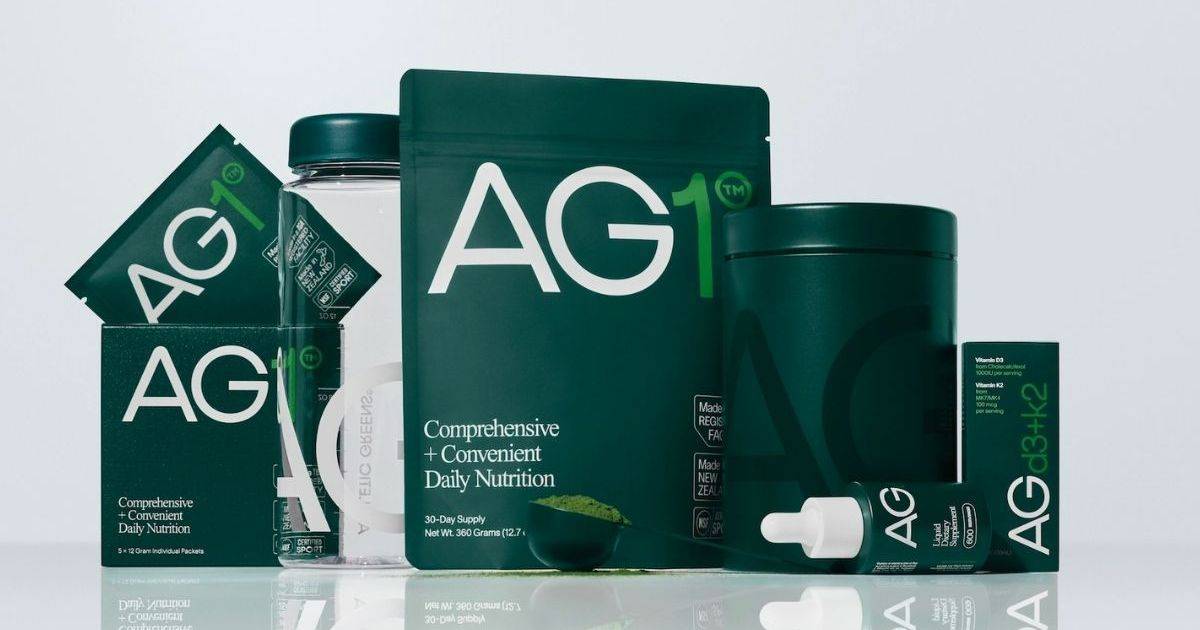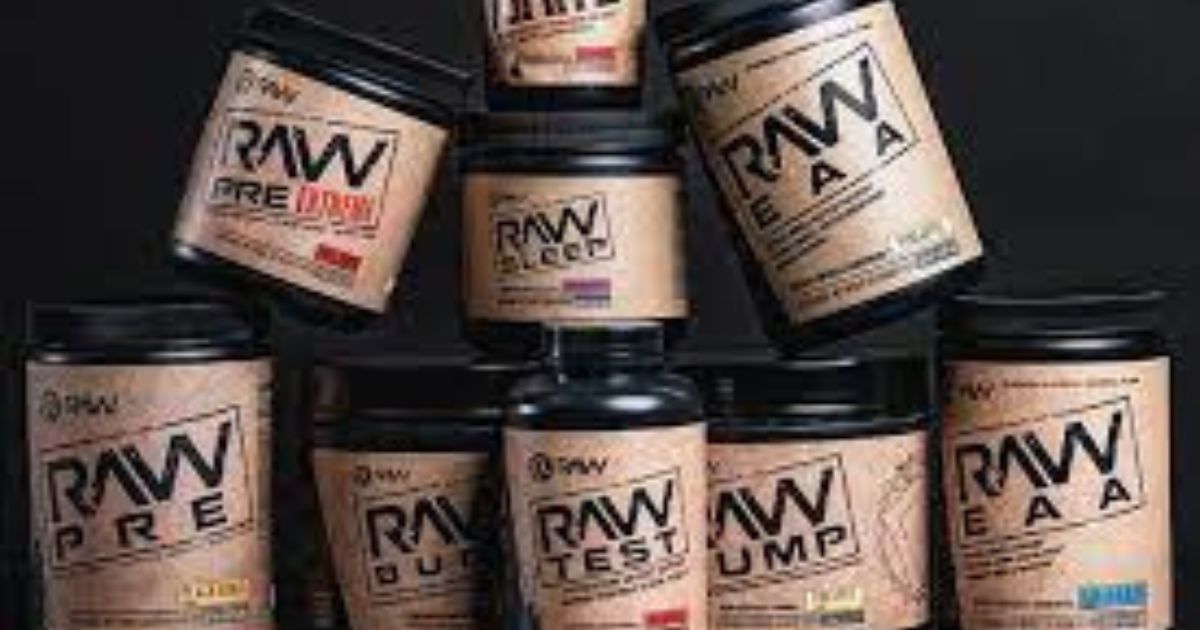Ag1 nutrition label provides information about the nutritional content of a food or beverage product. This information includes serving size, calories, and nutrient amounts.
In today’s health-conscious society, consumers are increasingly interested in the nutritional quality of the foods and beverages they consume. Therefore, understanding the nutritional information listed on food labels has become an important aspect of making informed food choices. Nutrition labels indicate the amount of calories per serving, as well as the quantities of different nutrients like fat, carbohydrates, fiber, and protein.
Additionally, they provide the percentage of daily value for each nutrient, which helps consumers determine if a product is high or low in a specific nutrient. By reviewing nutrition labels, consumers can make more informed choices to fit their nutritional needs and goals.

Credit: www.youtube.com
Introduction: Understanding The Importance Of Nutrition Labels
The Basics Of Nutrition Labels And How They Can Help In Maintaining A Healthy Diet
Maintaining a healthy diet is essential for a healthy lifestyle, and to do that, you need to know what you are consuming. Nutrition labels provide the necessary information about the food products we consume daily. Here are some key points to know about the basics of nutrition labels and how they can assist in maintaining a healthy diet:
- They inform about serving size, calories, and nutrients per serving.
- They help you compare different food products and choose the healthiest one.
- They assist in tracking the daily intake of calories and nutrients, avoiding overeating.
The History Of Nutrition Labeling And How It Has Evolved Over The Years
Nutrition labeling has a long history, and it has gone through several changes and evolutions. Here are some essential points to know about the history of nutrition labeling:
- The first nutrition labeling was mandated by the u.s fda in the early 1990s.
- In 2016, the fda updated the nutrition facts label to provide more realistic serving sizes and to declare the amount of added sugars.
- Today, nutrition labeling is widely used around the world to inform about food products, and it is an essential tool in public health campaigns against obesity and other diet-related diseases.
Explanation Of The Ag1 Nutrition Label And Its Unique Features
Ag1 nutrition label is a specially designed label that meets the specific needs of farmers, growers, and food producers. Here are some unique features of the ag1 nutrition label:
- It provides details about the nutrients that are essential to plant growth and overall soil health.
- It informs about the sources of nutrients, such as natural fertilizers, organic matter, and cover crops.
- It helps farmers and growers to make informed decisions about their nutrient management practices and to promote sustainable agriculture.
Understanding the importance of nutrition labels is crucial in maintaining a healthy diet and making informed food choices. The history of nutrition labeling shows how it has evolved over the years to meet the needs of consumers. The ag1 nutrition label is an example of how labeling has advanced to meet the specific needs of farmers and growers.
With all these developments, we have access to more information than ever before, making it easier for us to lead healthier lives.
Understanding The Ag1 Nutrition Label
Eating a balanced diet is important for overall health, and the ag1 nutrition label is a useful tool for making informed decisions about the foods we consume. Here’s what you should know about understanding this label.
Key Components Of The Ag1 Nutrition Label
The ag1 nutrition label provides information about the nutritional value of food, indicating the key components necessary for a balanced diet. These include:
- Serving size: Indicates the size of the food serving and the number of servings in each package, which is crucial in determining the number of nutrients consumed.
- Calories: The total amount of calories within one serving of food.
- Nutrient percentages: Shows the recommended daily intake of specific nutrients, including vitamins, minerals, and macronutrients.
How The Ag1 Nutrition Label Differs From Other Nutrition Labels In The Market
While most nutrition labels are similar in format, the ag1 nutrition label provides additional information about the food source, including where and how the food was grown, raised, or produced. This transparency offers consumers confidence in the nutritional value of the food they are consuming.
How To Read And Interpret The Label To Make Informed Decisions About Your Diet
Understanding the ag1 nutrition label is essential in making informed decisions about what we eat. Here are some tips to help you read and interpret the label:
- Read the serving size and note the number of servings in one package.
- Check the calories and determine whether the serving size meets your dietary needs.
- Consider the percentage of nutrient intake and make sure it is in line with your daily requirements.
- Be aware of added sugars, unhealthy fats, and high levels of sodium.
The ag1 nutrition label offers essential information about the food we consume and can help us make informed decisions about our diet. By reading and interpreting the label correctly, we can take responsibility for our health and well-being while enjoying the foods we love.
The Benefits Of Using Ag1 Nutrition Label For Your Health
The Importance Of Nutrition In Maintaining A Healthy Lifestyle And Preventing Diseases
Nutrition plays a vital role in maintaining a healthy lifestyle and preventing diseases. Incorporating nutritious food in our diet can benefit our physical and mental well-being in several ways. Here are some nutritional benefits that we can gain from food:
- Strengthens immunity
- Provides energy to the body
- Improves cognitive function
- Controls weight
- Prevents chronic diseases such as diabetes and heart disease
How Using The Ag1 Nutrition Label Can Help You Make Better Food Choices
The ag1 nutrition label can help you make better food choices by providing detailed information about the nutritional contents present in the food. With the help of this label, you can compare different food items and choose the ones that are more nutritious.
Here are some ways that the ag1 nutrition label can assist you in making better food choices:
- It lists the number of calories present in the food
- It lists the nutritional value of the food
- It labels the food’s fat content, including saturated and unsaturated fats
- It labels the amount of sugar and salt present in the food
How The Ag1 Nutrition Label Can Aid In Reaching Your Health Goals
Setting health goals is an essential part of maintaining a healthy lifestyle. The ag1 nutrition label can help you achieve your health goals by providing a better understanding of various food items’ nutritional content. Here are some ways the ag1 nutrition label can assist you in reaching your health goals:

- It can help you track your calorie intake
- It can help you limit your sugar and salt intake
- It can help you consume more nutrient-dense food items
- It can help you make informed choices about food while dining out
Incorporating a nutritious diet in our lifestyle is crucial for optimal health. The ag1 nutrition label can guide us towards making informed choices, becoming aware of our calorie intake, and reaching our health goals. Use the label as a helpful tool to make better food choices for a healthier lifestyle.
Decoding Nutrient Values On Ag1 Nutrition Label
Healthy eating is a vital component of a healthy lifestyle. Understanding the nutrient values on ag1 nutrition labels is crucial to making healthier food choices. We will provide a comprehensive explanation of the different nutrients listed on the ag1 nutrition label, the difference between macronutrients and micronutrients, and the role of different nutrients in maintaining good health.
A Comprehensive Explanation Of The Different Nutrients Listed On The Ag1 Nutrition Label
The following are the different nutrients listed on ag1 nutrition labels that you should pay attention to when making food choices:
- Calories: This measures the energy present in a serving of food.
- Total fat: This measures the amount of fat in a serving of food.
- Saturated fat: This measures the amount of saturated fat in a serving of food.
- Trans fat: This measures the amount of trans fat in a serving of food.
- Cholesterol: This measures the amount of cholesterol in a serving of food.
- Sodium: This measures the amount of salt present in a serving of food.
- Total carbohydrates: This measures the amount of carbohydrates in a serving of food.
- Dietary fiber: This measures the amount of fiber present in a serving of food.
- Sugars: This measures the amount of sugars in a serving of food.
- Protein: This measures the amount of protein present in a serving of food.
Understanding The Difference Between Macronutrients And Micronutrients
Macronutrients are essential nutrients that are required in large quantities for proper bodily function. These include carbohydrates, proteins, and fats. Micronutrients, on the other hand, are nutrients that are required in smaller quantities, but are no less important. Micronutrients include vitamins and minerals.
The Role Of Different Nutrients In Maintaining Good Health
Different nutrients play different roles in maintaining good health. Here are a few examples:
- Protein: Proteins are building blocks for muscles, skin, and bones. Eating enough protein is essential for maintaining and repairing these tissues.
- Carbohydrates: Carbohydrates are the primary source of energy for the body. Eating carbohydrates can help your body maintain its energy levels throughout the day.
- Fats: Fats are an essential nutrient required to absorb vitamins and minerals. Eating healthy fats can help maintain your body’s functions.
- Fiber: Fiber helps to maintain a healthy digestive system by keeping things moving smoothly in your gut.
- Vitamins and minerals: Vitamins and minerals play essential roles in the proper functioning of your body’s cells, tissues, and organs.
Decoding nutrient values on ag1 nutrition labels is an essential component of healthy eating. By understanding the different nutrients present in your food, you can make healthier food choices that can help improve your overall health and wellbeing.
The Future Of Nutrition Labels: Trends To Watch
Predictions For The Future Of Nutrition Labels And How They Will Evolve
Nutrition labels are a crucial tool in helping people make informed decisions about their diet. They give consumers a better understanding of what they are consuming and help them make healthier choices. Over the years, nutrition labels have evolved, and here are some predictions for their future growth:
- Personalized nutrition labels – consumers have different needs based on their unique body requirements, and personalized nutrition labels that feature specific dietary guidelines could become the norm.
- Qr codes – qr codes could replace standard nutrition labels, making it easy for consumers to access more in-depth information about ingredients, allergens and nutrition information.
- Greater transparency – consumers are becoming more conscious of what they are eating, and they expect food manufacturers to provide more transparent information. Future nutrition labeling may include origin information, water usage, and fair-trade certification.
The Role Of Technological Advancements In Nutrition Labeling
Technology has significantly impacted the food industry, and it’s no surprise that it’s had an impact on nutrition labeling as well. Here are some ways that technological advancements are transforming nutrition labeling:
- Augmented reality – augmented reality technology can provide consumers with interactive and engaging information about nutritional products.
- Smart packaging – in the future, packaging for foods and beverages may contain embedded sensors that enable consumers to track the freshness and nutritional value of the products.
- Blockchain technology – blockchain technology could help to ensure transparency in the food industry, even when it comes to complicated supply chains.
Potential Benefits And Concerns With New Nutrition Labeling Trends
While the potential for advances in nutrition labeling seems clear, there are also potential risks and challenges that come with it. Here are some potential benefits and concerns:
Benefits:
- More informed consumers – better nutrition labeling helps consumers make more informed decisions about their diet, leading to a healthier lifestyle.
- Greater transparency – new nutritional labels will be more transparent, providing consumers with vital information such as calories, nutrients, and ingredient lists.
Concerns:
- Lack of standardization – with new advances in nutrition labeling, there may be a lack of consistency in labels, making it difficult for consumers to compare products.
- Cost – implementing new labeling technologies may increase the cost of food production, resulting in higher-priced goods for consumers.
Frequently Asked Questions Of Ag1 Nutrition Label
What Is Ag1 Nutrition Label?
Ag1 nutrition label is a new nutrition labeling system that provides clear and concise information about the nutritional content of food products.
How Does Ag1 Nutrition Label Differ From Other Nutrition Labels?
Unlike current nutrition labels, ag1 nutrition label provides personalized and actionable information based on an individual’s unique health requirements.
Can Ag1 Nutrition Label Be Accessed On Any Device?
Yes, ag1 nutrition label can be accessed on any device, including smartphones, tablets, and computers.
Is Ag1 Nutrition Label Available Worldwide?
Currently, ag1 nutrition label is only available in select countries, but it is expected to rollout globally in the near future.
How Does Ag1 Nutrition Label Benefit Consumers?
Ag1 nutrition label empowers consumers to make informed decisions about the food they eat by providing clear and easy-to-understand information about its nutritional content.
How Does Ag1 Nutrition Label Benefit Food Manufacturers?
Ag1 nutrition label helps food manufacturers create healthier products that meet the needs and preferences of their consumers while also complying with regulatory requirements.
Conclusion
After analyzing the ag1 nutrition label, we can conclude that it is a valuable tool that can help individuals make informed dietary choices. By providing detailed information about the nutritional content of food products, the label enables consumers to assess the health benefits and risks of their diets.
Additionally, the inclusion of serving sizes and percent daily values allows individuals to manage their caloric intake more effectively. While there are some limitations to the ag1 nutrition label, such as difficulties in comparing foods with different serving sizes, overall it is a useful resource for promoting healthy eating habits.
As consumers, we should make a conscious effort to read and analyze nutrition labels, and use the information provided to make informed decisions about our diets.




